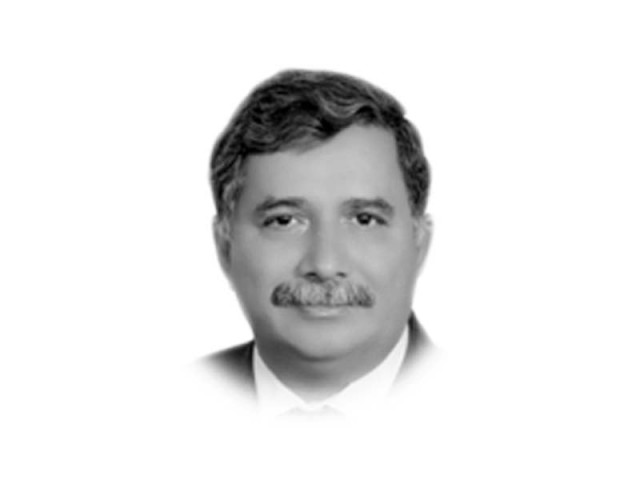Time to put our own house in order
The first major fault line was our appeasement of the religious groups during the process of constitution making

The statement of the Army Chief, General Qamar Bajwa, to put our own house in order has generated a keen debate in the print and electronic media. It is, however, essential that before venturing into further debate, we investigate the major fault lines of governance in order to suggest a proper remedial solution. In my analysis, the fault lines identified below need to be addressed in this regard.
The first major fault line was our appeasement of the religious groups during the process of constitution making ever since the birth of Pakistan thus encouraging religiosity in the body politics. The Muslim League made itself a virtual hostage to the religious groups by equating Pakistan with Islam and related religiosity. The extremism we observe today is the direct result of this early step that was taken after Jinnah’s death. Second is our history of suppression of multiculturism and pluralistic discourse, by imposing government-sponsored ideologies and negating cultural identities.
The third fault line is the decision of mobilisation of armed militias and stirring Jihadi rhetoric and the abortive attempt for taking over Kashmir in 1948. The fourth one relates to the practice of extensions granted to General Ayub Khan from time to time and arrogating to him an overarching role in the political affairs of Pakistan. Fifth, it has been the feudal, bureaucratic and military nexus, using all means to wield power, ignoring the sentiments of the majority. The sixth fault line was becoming the most allied ally of the United States, by signing SEATO and CENTO to contain communism (read: the Soviet Union).
The seventh fault line was the abrogation of the constitution of 1956 and imposition of martial law, in negation of the rule of law. Ayub Khan centralised all powers in his person. Despite celebrating a decade of development thanks to generous US aid, regional and class disparities widened, resulting in mass agitation all over the country.
Then there was the refusal to accept the results of the 1970 general elections. After losing East Pakistan in utter humiliation, Yahya Khan had no other option but to hand over power to Zulfikar Ali Bhutto for the rest of the country.
With the handing over of power to a popular party, a new era of constitutionalism began resulting in the Constitution of 1973. In those circumstances, given that the Pakistan Peoples Party (PPP) and the National Awami Party (NAP) were both progressive and liberal parties, should have been natural allies, but unfortunately, they fell apart over the Balochistan policy. Bhutto dismissed Balochistan’s government followed by a military operation. Consequently, the NAP-JUI government also resigned as a show of solidarity. This was the ninth fault line. Although Bhutto was a charismatic leader with progressive thoughts, he also used rhetoric and jingoistic sloganeering such as “we would eat grass but fight for a thousand years”, to whip up public sentiment. Such jingoism led us to Jihadi tendencies which became the tenth fault line.
The use of the military in Balochistan again propped up the interventionist role of our armed forces. Instead of consolidating political institutions, Bhutto unfortunately was driven more by self-preservation tendencies. The crackdown against the opposition, banning of NAP and imprisonment of their leaders are just a few examples in this regard. At the time of his anti-US stance he required the support of all political forces. This gave his political opponents a chance to organise a movement, with the alleged support of the US, which ultimately resulted in the martial law of Ziaul Haq.
Under the Reagan Doctrine, Pakistan’s alliance to sponsor a proxy war in the garb of Jihad in Afghanistan to dismantle governments and ultimately installing the Taliban government was the eleventh fault line. Embracing Jihadi non-state actors in order to pursue national policy objectives militarised a large segment of the society, tearing apart the social fabric.
Allowing foreigners of all hues and creeds to use our land for waging wars on our neighbours and resulting in acts of terror in the outside world, climaxing in the attack on the World Trade Center or the events of 9/11, was the twelfth fault line. This had brought us to the brink of war with other countries and developed the perception of Pakistan being an “epicentre of terrorism”, possessing “safe havens” for terrorists and “no go areas”.
During subsequent years, the country witnessed the toppling of the elected governments of Benazir Bhutto and Nawaz Sharif and political engineering with no respect to the Constitution, the propping up of non-state actors resulting in self-inflicted harm in the form of insurgencies, and the worst episodes of terrorism. Even the last general elections were allegedly manoeuvred by using arm twisting methods in favour of one political party. As a result, Pakistan today is a divided house on almost all national issues.
The lessons drawn from the aforementioned fault lines are that it’s the constitution that binds the various segments of a society in the form of a social contract. It sets legal authority and parameters for all institutions and functionaries of the state. Political parties act as vehicles of expression for the people. Strong political conventions based on democratic values and norms provide strength to the political system. Such arrangements call for the supremacy of the constitution and civilian rule. The house can only be put in order by following the constitution and democratic conventions, focusing on socio-economic development, mending fences with neighbours, shunning extremism, curbing armed militias and violent non-state actors and adopting the policy of peaceful co-existence.
Published in The Express Tribune, March 31st, 2021.
Like Opinion & Editorial on Facebook, follow @ETOpEd on Twitter to receive all updates on all our daily pieces.














COMMENTS
Comments are moderated and generally will be posted if they are on-topic and not abusive.
For more information, please see our Comments FAQ